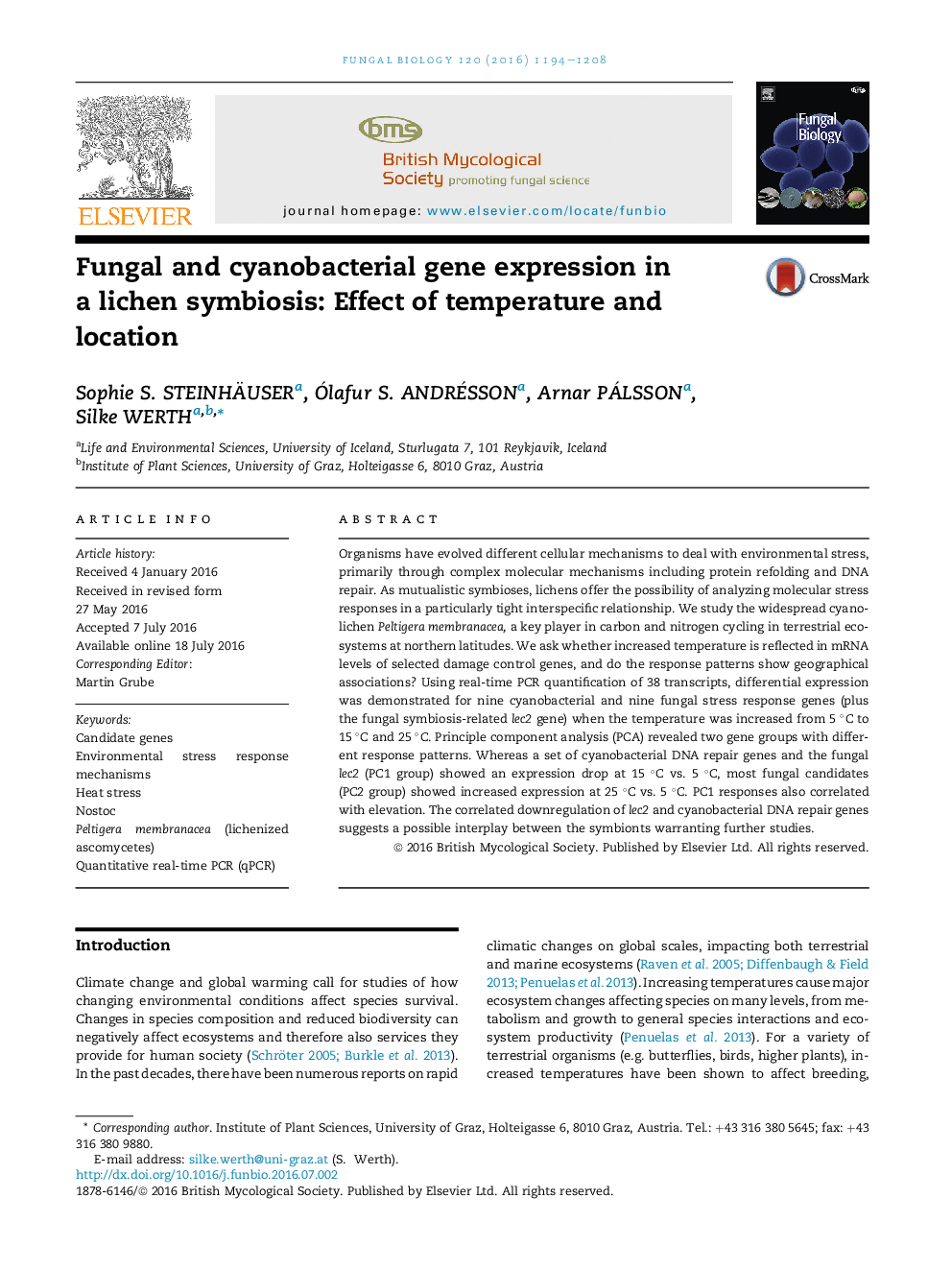| Article ID | Journal | Published Year | Pages | File Type |
|---|---|---|---|---|
| 4356733 | Fungal Biology | 2016 | 15 Pages |
•Response of the lichen Peltigera membranacea to thermal stress was studied with qPCR.•A shift from 5 °C to 25 °C causes heat stress response in the lichen mycobiont.•Altered gene expression in photobiont after 5 °C to 15 °C shift.•Increased temperatures affect lichen symbionts differently, depending on site elevation.•Correlated expression of mycobiont and photobiont suggests symbiont communication.
Organisms have evolved different cellular mechanisms to deal with environmental stress, primarily through complex molecular mechanisms including protein refolding and DNA repair. As mutualistic symbioses, lichens offer the possibility of analyzing molecular stress responses in a particularly tight interspecific relationship. We study the widespread cyanolichen Peltigera membranacea, a key player in carbon and nitrogen cycling in terrestrial ecosystems at northern latitudes. We ask whether increased temperature is reflected in mRNA levels of selected damage control genes, and do the response patterns show geographical associations? Using real-time PCR quantification of 38 transcripts, differential expression was demonstrated for nine cyanobacterial and nine fungal stress response genes (plus the fungal symbiosis-related lec2 gene) when the temperature was increased from 5 °C to 15 °C and 25 °C. Principle component analysis (PCA) revealed two gene groups with different response patterns. Whereas a set of cyanobacterial DNA repair genes and the fungal lec2 (PC1 group) showed an expression drop at 15 °C vs. 5 °C, most fungal candidates (PC2 group) showed increased expression at 25 °C vs. 5 °C. PC1 responses also correlated with elevation. The correlated downregulation of lec2 and cyanobacterial DNA repair genes suggests a possible interplay between the symbionts warranting further studies.
